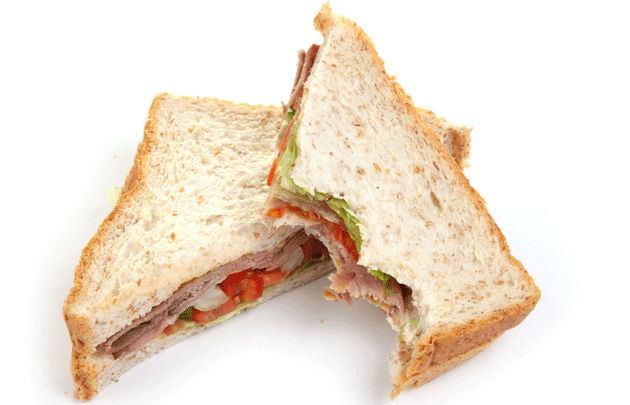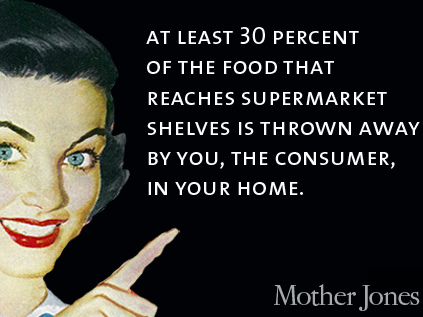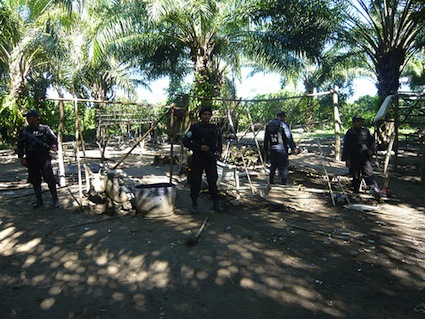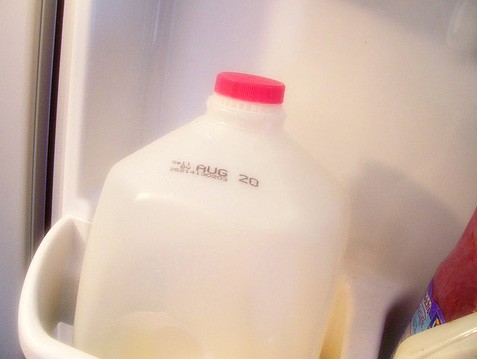
<a href="http://www.shutterstock.com/inline_image.mhtml?id=21649666&url=http%3A%2F%2Fdownload.shutterstock.com%2Fgatekeeper%2FW3siZSI6MTM3OTEyNzI1NSwiYyI6Il9waG90b19zZXNzaW9uX2lkIiwiZGMiOiJpZGxfMjE2NDk2NjYiLCJwIjoidjF8NzAwNTk0NnwyMTY0OTY2NiIsImsiOiJwaG90by8yMTY0OTY2Ni9tZWRpdW0uanBnIiwibSI6IjEiLCJkIjoic2h1dHRlcnN0b2NrLW1lZGlhIn0sImZIK0NEUE9iVnZvTWYrNGlTNXpQUlBnTUVzNCJd%2Fshutterstock_21649666.jpg&src=hf2jkXJag--2tt7GxxDWDw-1-3" target="_blank">Matthew Cole</a>/Shutterstock
A full third of the world’s food is wasted. According to a new report from the UN’s Food and Agriculture Organization, discarded food accounts for a staggering amount of planet-warming greenhouse gas emissions. In fact, if food waste was a country, its 3.3 gigatonnes of emissions would make it the third highest-emitting country in the world, after China and the United States:

(LULUCF refers to “land use, land-use change, and forestry”—so this chart doesn’t take into account all of the carbon emitted when a rainforest is converted to a farm, for example.)
What exactly makes all that waste and its emissions? It’s not just consumers throwing dinner scraps away. Some food spoils before farmers can harvest it, other food goes bad on its way from the farm to the market, and still more food ends up rotting on supermarket shelves. Looking at emissions of uneaten food from farm to table, the researchers found that food wasted at the consumer phase had the highest carbon footprint. That’s because by the time food gets to that stage, it’s already accumulated emissions from production, harvest, and distribution. In other words, when chuck food that you buy at the supermarket, you’re throwing away every part of the process that has gotten it there, as well:

Some kinds of food waste create more emissions than others. Wasted fruit, for example, has a relatively small ratio of food waste to carbon emitted. Meat’s ratio is much larger. That’s because meat production is exceptionally carbon intensive.

Food waste and emissions also vary by region. This graph shows that industrialized Asia (China, Japan, and South Korea) is far and away the largest contributor to both food waste and carbon emissions in the world:

But if you look at food waste’s carbon footprint per person, North America and Oceania (United States, Canada, Australia, and New Zealand) is the winner—meaning the uneaten food produced by each citizen of North America and Oceania is responsible for more carbon emissions than that of each person in industrialized Asia. The report authors don’t go into the reasons for this, but I’m guessing it has to do with the fact that North Americans waste more food overall—especially in the carbon-instensive consumer phase—than people most other regions.

Of course, carbon emissions are not the only way in which wasted food harms the environment. The report finds that wasted food consumes an amount of water almost three times as large as Switzerland’s Lake Geneva—that’s 60 percent more than Lake Tahoe. The authors also note that uneaten food could cover nearly 30 percent of the world’s arable land.
And that’s to say nothing of the human impact of all this food waste. By 2020, the global population is expected to hit 8 billion. How are we going to feed everyone? Some argue that we should use biotechnology to design higher yielding crops, while others believe that we simply must redistribute the food we already grow—enough to feed 12 billion people, my colleague Tom Philpott reports—more evenly. But surely figuring out how to eat the food that we produce instead of throwing it away would help, too.
















